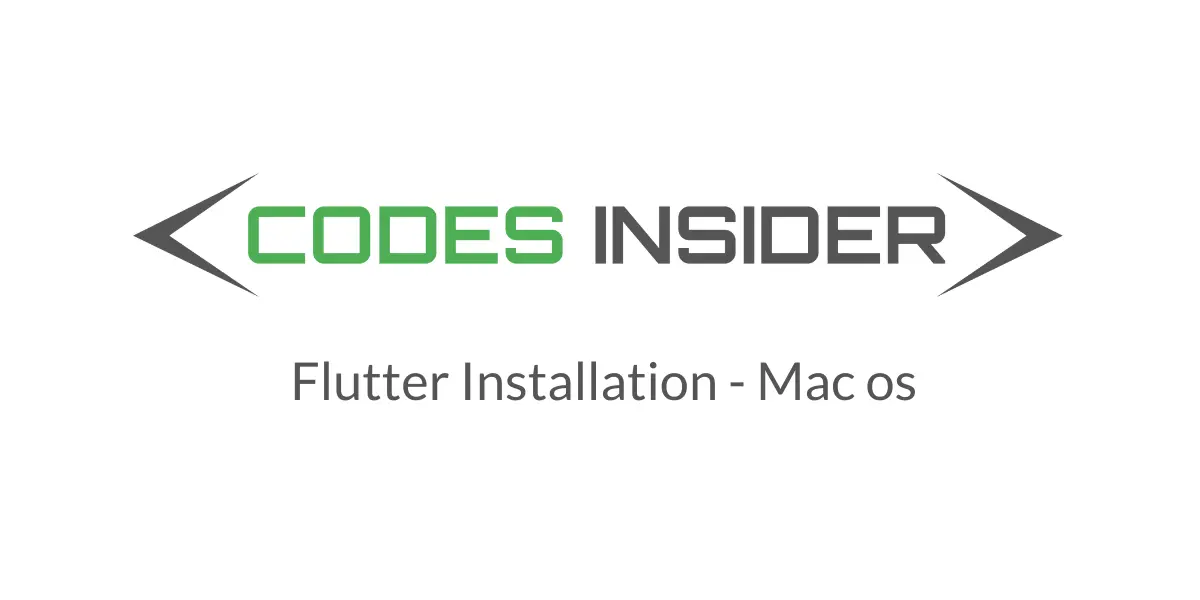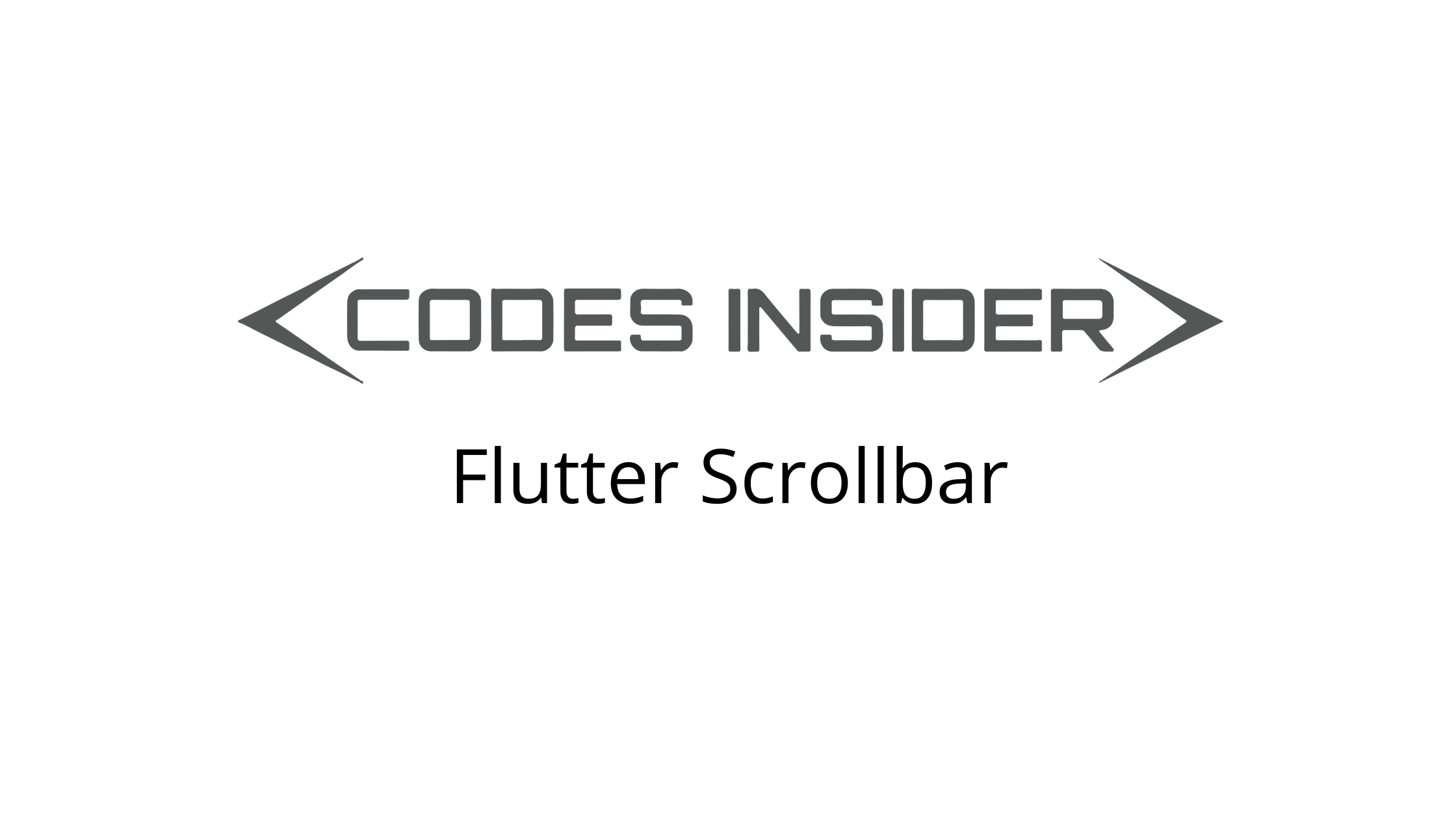
In this tutorial you will learn how to install flutter on Mac step by step and how to configure XCode to work with flutter.But before we install flutter lets know what actually is flutter.
Windows : How to install flutter on windows with android studio.
Visual studio code : How to install flutter with visual studio code.
Ubuntu : How to install flutter on ubuntu.
Note: The content of this post is completely referenced from flutter official website.
What is Flutter?
Flutter is Google’s mobile UI framework for crafting high-quality native interfaces on web, mobile and desktop in record time. It is used to develop applications for web, desktop, Android and iOS.Using a single codebase, you can develop mobile apps for both Android and iOS in the same time without putting extra effort. Flutter works with existing code,and is used by developers and organisations around the world, and is free and open source.
NOTE : This tutorial about how to install flutter on mac os is complete reference from flutter official documentation.
How to Install Flutter On Mac?
Minimum System requirements
To install Flutter on Mac, your development environment must meet these minimum requirements
- Operating System: macOS (64-bit)
- Disk Space: 2.8 GB (does not include disk space for IDE/tools).
- Tools: Flutter depends on these command-line tools being available in your environment.
1. bash
2. curl
3. Git for Mac
4. mkdir
5. rm
6. unzip
7. which
Get the Flutter SDK
Download the latest flutter SDK from the flutter official site from the link below.
Download Fltter SDK
Extract the file in the desired location, for example:
$ cd ~/development
$ unzip ~/Downloads/flutter_macos_v1.12.13+hotfix.5-stable.zip
Add the flutter tool to your path:
$ export PATH="$PATH:`pwd`/flutter/bin"
This command sets your PATH variable for the current terminal window only. To permanently add Flutter to your path checkout the update your path section of this post.
Optionally, pre-download development binaries:
The flutter tool downloads platform-specific development binaries as needed. For scenarios where pre-downloading these artifacts is preferable (for example, in hermetic build environments, or with intermittent network availability), iOS and Android binaries can be downloaded ahead of time by running:
$ flutter precache
For additional download options, see flutter help precache command.
Yay! you can now run flutter commands.
Run flutter doctor
Run the following command to see if there are any dependencies you need to install to complete the setup (for verbose output, add the -v flag):
$ flutter doctor
This command checks your environment and displays a report to the terminal window. The Dart SDK is bundled with Flutter; it is not necessary to install Dart separately. Check the output carefully for other software you might need to install or further tasks to perform (shown in bold text).
For example:
[-] Android toolchain - develop for Android devices
• Android SDK at /Users/obiwan/Library/Android/sdk
✗ Android SDK is missing command line tools; download from https://goo.gl/XxQghQ
• Try re-installing or updating your Android SDK,
visit https://flutter.dev/setup/#android-setup for detailed instructions.
Fix license issue in Android studio
$ flutter doctor --android-licenses
Fix iOS toolchain issues
( Install Xcode command line tools if you are on Mac OS Mojave)
$ brew update
$ brew install --HEAD usbmuxd
$ brew link usbmuxd
$ brew install --HEAD libimobiledevice
$ brew install ideviceinstaller
Update iOS-deploy
$ npm install -g ios-deploy
The following sections describe how to perform these tasks and finish the setup process.
Once you have installed any missing dependencies, run the flutter doctor command again to verify that you’ve set everything up correctly.
Update your path
- Determine the directory where you placed the Flutter SDK. You need this in Step 3.
- Open (or create) the rc file for your shell. For example, macOS Mojave (and earlier) uses the Bash shell by default, so edit $HOME/.bash_profile or $HOME/.bashrc. macOS Catalina uses the Z shell by default, so edit $HOME/.zshrc.If you are using a different shell, the file path and filename will be different on your machine.
- Add the following line and change
[ PATH_TO_FLUTTER_GIT_DIRECTORY ] to be the path where you cloned Flutter’s git repo:
$ export PATH="$PATH:[PATH_TO_FLUTTER_GIT_DIRECTORY]/flutter/bin"
- Run source $HOME/.<rc file> to refresh the current window, or open a new terminal window to automatically source the file.
- Verify that the flutter/bin directory is now in your PATH by running:
$ echo $PATH
- Verify that the flutter command is available by running:
$ which flutter
Platform Setup
macOS supports developing Flutter apps in iOS, Android, and the web (technical preview release). Complete the platform setup steps now, to be able to build and run your first Flutter app.
iOS Setup
Install Xcode
To develop Flutter apps for iOS, you need a Mac with Xcode.
Install the latest stable version of Xcode (using web download or the Mac App Store).
Configure the Xcode command-line tools to use the newly-installed version of Xcode by running the following from the command line:
$ sudo xcode-select --switch /Applications/Xcode.app/Contents/Developer
$ sudo xcodebuild -runFirstLaunch
This is the correct path for most cases, when you want to use the latest version of Xcode. If you need to use a different version, specify that path instead.
Make sure the Xcode license agreement is signed by either opening Xcode once and confirming or running sudo xcodebuild -license from the command line.
Versions older than the latest stable version may still work, but are not recommended for Flutter development. Using old versions of Xcode to target bitcode is not supported, and is likely not to work.
With Xcode, you’ll be able to run Flutter apps on an iOS device or on the simulator.
Set up the iOS simulator
To prepare to run and test your Flutter app on the iOS simulator, follow these steps:
- On your Mac, find the Simulator via Spotlight or by using the following command:
$ open -a Simulator
- Make sure your simulator is using a 64-bit device (iPhone 5s or later) by checking the settings in the simulator’s Hardware > Device menu.
- Depending on your development machine’s screen size, simulated high-screen-density iOS devices might overflow your screen. Set the device scale under the Window > Scale menu in the simulator.
Create and run a simple Flutter app
To create your first Flutter app and test your setup, follow these steps:
Create a new Flutter app by running the following from the command line
$ flutter create my_app
A my_app directory is created, containing Flutter’s starter app. Enter this directory
$ cd my_app
To launch the app in the Simulator, ensure that the Simulator is running and enter
$ flutter run
Deploy to iOS devices
To deploy your Flutter app to a physical iOS device you need the third-party CocoaPods dependency manager and an Apple Developer account. You’ll also need to set up physical device deployment in Xcode.
Install and set up CocoaPods by running the following commands
$ sudo gem install cocoapods
$ pod setup
Follow the Xcode signing flow to provision your project
- Open the default Xcode workspace in your project by running open ios/Runner.xcworkspace in a terminal window from your Flutter project directory.
- Select the device you intend to deploy to in the device drop-down menu next to the run button.
- Select the Runner project in the left navigation panel.
In the Runner target settings page, make sure your Development Team is selected. The UI varies depending on your version of Xcode.
- For Xcode 10, look under General > Signing > Team.
- For Xcode 11 and newer, look under Signing & Capabilities > Team.
When you select a team, Xcode creates and downloads a Development Certificate, registers your device with your account, and creates and downloads a provisioning profile (if needed).
- To start your first iOS development project, you might need to sign into Xcode with your Apple ID.
Development and testing is supported for any Apple ID. Enrolling in the Apple Developer Program is required to distribute your app to the App Store. For details about membership types, see Choosing a Membership. - The first time you use an attached physical device for iOS development, you need to trust both your Mac and the Development Certificate on that device. Select
Trustin the dialog prompt when first connecting the iOS device to your Mac.
Then, go to the Settings app on the iOS device, select General > Device Management and trust your Certificate. - If automatic signing fails in Xcode, verify that the project’s General > Identity > Bundle Identifier value is unique.
Start your app by running flutter run.
Android Setup
Install Android Studio
- Download and install Android Studio.
- Start Android Studio, and go through the ‘Android Studio Setup Wizard’. This installs the latest Android SDK, Android SDK Platform-Tools, and Android SDK Build-Tools, which are required by Flutter when developing for Android.
Set up your Android device
To prepare to run and test your Flutter app on an Android device, you’ll need an Android device running Android 4.1 (API level 16) or higher.
- Enable Developer options and USB debugging on your device. Detailed instructions are available in the Android documentation.
- Windows-only: Install the Google USB Driver.
- Using a USB cable, plug your phone into your computer. If prompted on your device, authorize your computer to access your device.
- In the terminal, run the flutter devices command to verify that Flutter recognizes your connected Android device.
By default, Flutter uses the version of the Android SDK where your adb tool is based. If you want Flutter to use a different installation of the Android SDK, you must set the ANDROID_HOME environment variable to that installation directory.
Set up the Android emulator
To prepare to run and test your Flutter app on the Android emulator, follow these steps
- Enable VM acceleration on your machine.
- Launch Android Studio > Tools > Android > AVD Manager and select Create Virtual Device. (The Android submenu is only present when inside an Android project.)
- Choose a device definition and select Next.
- Select one or more system images for the Android versions you want to emulate, and select Next. An x86 or x86_64 image is recommended.
- Under Emulated Performance, select Hardware – GLES 2.0 to enable hardware acceleration.
- Verify the AVD configuration is correct, and select Finish.
For details on the above steps, see Managing AVDs. - In Android Virtual Device Manager, click Run in the toolbar. The emulator starts up and displays the default canvas for your selected OS version and device.
Install Flutter and Dart plugins
- Start Android Studio.
- Open plugin preferences ( Preferences > Plugins on macOS, File > Settings > Plugins on Windows ).
- Select Marketplace, select the Flutter plugin and click Install.
- Click Yes when prompted to install the Dart plugin.
- Click Restart when prompted.
That’s all about how to install flutter on mac with xcode.We will see other flutter concepts in the next posts.
Do like and share if you find this post helpful.Thank you!!



Leave a Reply